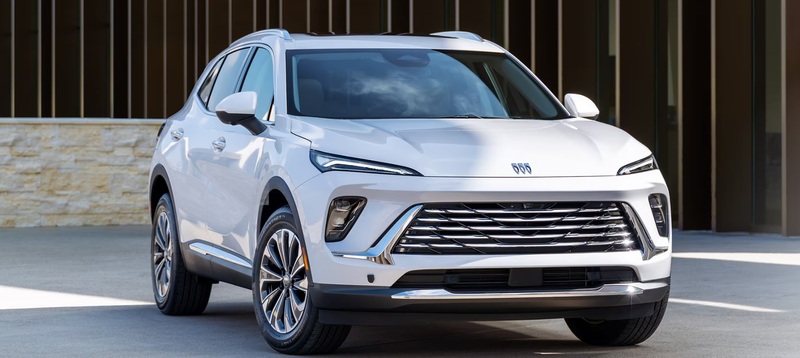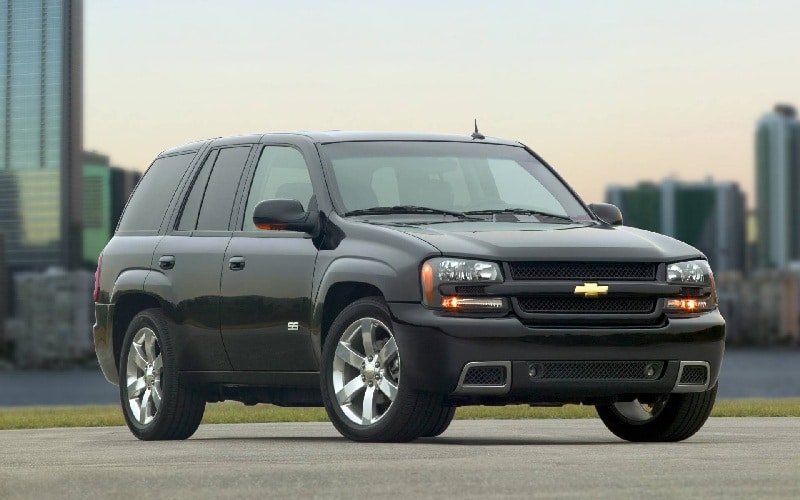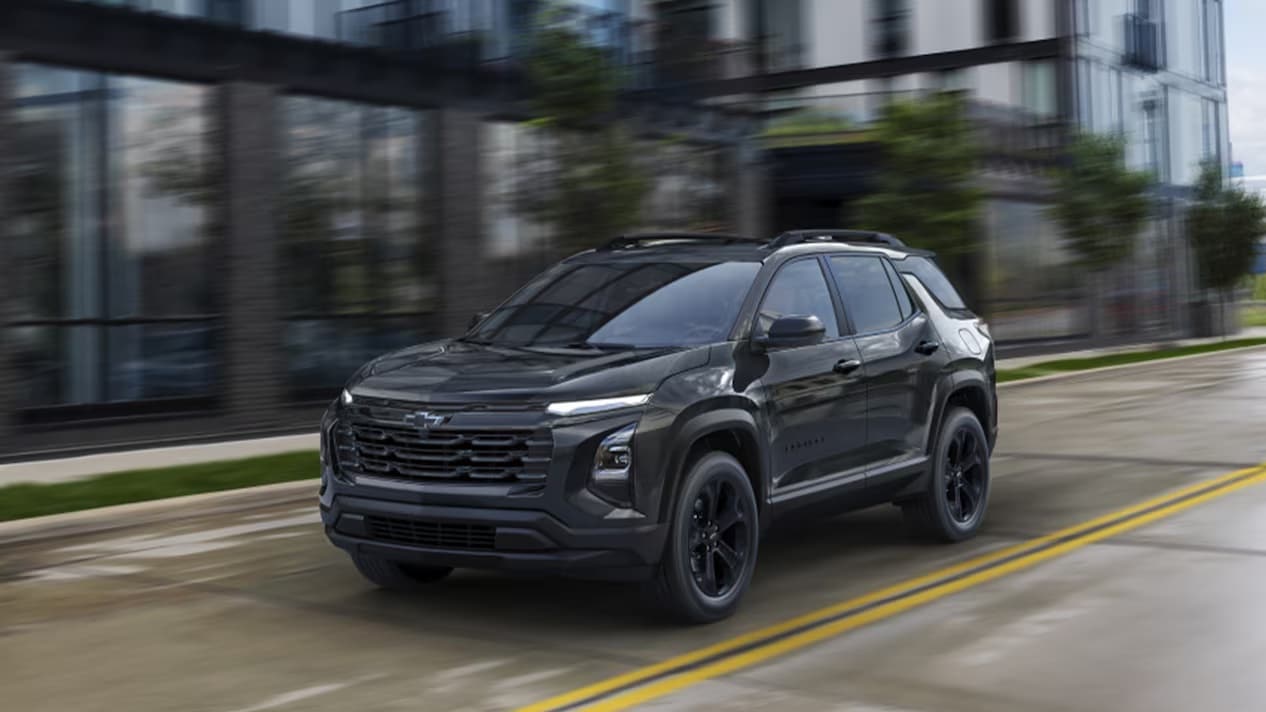Bicycle Detection Capability in the 2025 Buick Envision
The Buick Envision represents a significant step forward in automotive safety technology, particularly with its advanced bicycle detection capabilities. As urban environments become increasingly shared spaces between motorists and cyclists, the need for sophisticated detection systems has never been more important. The comprehensive cyclist detection system in the Buick Envision minimizes the risk of collisions […]
The Buick Envision represents a significant step forward in automotive safety technology, particularly with its advanced bicycle detection capabilities. As urban environments become increasingly shared spaces between motorists and cyclists, the need for sophisticated detection systems has never been more important. The comprehensive cyclist detection system in the Buick Envision minimizes the risk of collisions and enhances safety for all road users.

The Core Components of the Bicycle Detection System
At the heart of the Buick Envision bicycle detection system is a sophisticated network of sensors, cameras, and processing units working harmoniously. The system primarily utilizes a forward-looking camera mounted near the interior rearview mirror. The high-resolution camera continuously scans the road ahead and captures real-time images, which the vehicle’s advanced processing unit instantly analyzes.
The system is part of a broader safety package that includes Front Pedestrian and Bicyclist Braking and Side Bicyclist Alert. These features are standard on the Envision, reflecting the Buick commitment to making advanced safety technology accessible across all trim levels.
How the System Identifies Bicyclists
The bicycle detection capability employs sophisticated computer vision algorithms to distinguish bicycles and their riders from other objects and road users. The system recognizes the unique visual signatures of bicycles and cyclists through:
- Shape Recognition: The algorithm identifies the characteristic silhouette of a bicycle, including the wheels, frame, and rider.
- Movement Pattern Analysis: Cyclists move in distinctive ways compared to pedestrians or vehicles. The system tracks motion patterns specific to bicycle travel.
- Speed Calculation: The system calculates the relative speed of detected bicycles to determine if they pose a collision risk.
- Directional Analysis: By analyzing the direction of travel, the system can predict potential intersection points with the vehicle’s path.
The Envision system performs reliably in most everyday driving scenarios and adapts well to various lighting and weather conditions. Although extreme weather can slightly reduce its performance, the system continues to function dependably.
Front Pedestrian and Bicyclist Braking System
The Front Pedestrian and Bicyclist Braking feature is a cornerstone of the Envision safety technology. When operational, it monitors the area in front of the vehicle for pedestrians and cyclists. The detection area extends several metres ahead of the vehicle, giving the system ample time to respond to potential hazards.
If a cyclist is in the vehicle’s path and the system determines a collision is imminent, it initiates a multi-stage response:
- Visual Alert: A flashing red alert appears on the windshield, immediately drawing the driver’s attention to the hazard.
- Audible Warning: The system produces distinctive warning sounds to further alert the driver.
- Pre-Collision Braking Preparation: The braking system has maximum responsiveness.
- Automatic Emergency Braking: If the driver doesn’t respond in time, the system can automatically apply the brakes to reduce impact severity or potentially avoid a collision altogether.
The system is most effective at speeds between 5 to 80 km/h, making it particularly valuable in urban and suburban environments where most bicycle-vehicle interactions occur.
Side Bicyclist Alert
A unique aspect of the Envision bicycle safety technology is the Side Bicyclist Alert feature. While many vehicles only monitor for cyclists directly in front of the vehicle, the Envision expands this protection to include cyclists approaching from the sides.
This feature uses additional sensors around the vehicle to detect cyclists who might cross the vehicle’s path from lateral directions. This feature is especially valuable at intersections, when making turns, or when pulling out of parking spaces—scenarios that account for a significant percentage of vehicle-bicycle accidents.
When a cyclist is detected approaching from the side with potential for collision, the system provides distinctive alerts to the driver, different from those used for frontal detection, allowing for intuitive understanding of the hazard’s direction.
Integration with Other Safety Systems
The Buick Envision bicycle detection capability doesn’t operate in isolation. It’s fully integrated with the comprehensive suite of safety technologies, creating multiple layers of protection:
- Blind Zone Steering Assist: Works with bicycle detection to prevent lane changes when a cyclist is in the vehicle’s blind spot.
- Rear Cross Traffic Braking: Detects approaching cyclists when reversing and can automatically apply brakes if necessary.
- Intersection Automatic Emergency Braking: Helps prevent collisions with cyclists when crossing intersections.
- Lane Keep Assist with Lane Departure Warning: Keeps the vehicle from drifting into bike lanes or areas where cyclists might be present.
This integrated approach means protection for cyclists from frontal collisions and multiple potential accident scenarios.
Technical Limitations and Practical Considerations
While the Buick Envision bicycle detection system represents cutting-edge technology, drivers should understand its limitations:
- Speed Constraints: The system functions optimally between 5 and 80 km/h. Outside this range, effectiveness may be reduced.
- Environmental Factors: Poor visibility conditions, such as heavy fog, torrential rain, or snowstorms, may impact the system’s detection capabilities.
- Obscured Cyclists: The system may have reduced effectiveness if cyclists are partially obscured by other vehicles or objects.
- Unusual Bicycle Types: While the system can recognize standard bicycles, unusual designs or heavily modified bicycles might not be detected as reliably.
Buick emphasizes that these systems are driver assistance features, not replacements for attentive driving. The technology serves as an additional safety layer, not a substitute for driver awareness.
The Technology Behind the Detection
What makes the Envision bicycle detection capability particularly sophisticated is its foundation in advanced image processing and machine learning algorithms. The system employs:
- Real-time Image Analysis: The forward-looking camera captures 30+ frames per second, which are instantly analyzed for bicycle signatures.
- Machine Learning Models: The detection algorithms know thousands of bicycle images in various conditions, positions, and lighting situations.
- Predictive Modelling: Beyond simply detecting bicycles, the system predicts movement trajectories to anticipate potential collision paths.
- Continuous Improvement: The underlying software platform receives updates as detection technology evolves.
This technological approach allows the system to distinguish between various types of two-wheeled vehicles and pedestrians, ensuring appropriate responses for different road users.
The Human Factor: User Experience and Interface
The effectiveness of any safety system depends partly on how it communicates with the driver. The Envision bicycle detection system features:
- Intuitive Alerts: Visual warnings appear directly in the driver’s line of sight on the windshield, with a distinctive flashing red indicator that immediately draws attention without causing distraction.
- Customizable Sensitivity: Drivers can adjust certain system parameters through the vehicle’s settings menu, allowing for personalization based on driving environment and preferences.
- Status Indicators: The system provides clear feedback about whether it’s operational, temporarily limited, or requires attention.
- Educational Features: The vehicle’s infotainment system includes tutorials about the bicycle detection system’s operation and limitations.
Cyclist Safety in Modern Urban Environments
The development of technologies like the Envision bicycle detection system reflects broader changes in how we think about road safety. As urban areas increasingly promote cycling as a sustainable transportation option, vehicles must adapt to share the road safely.
The Buick Envision approach recognizes that modern safety systems must protect not just vehicle occupants but all road users. By specifically addressing bicycle safety, Buick acknowledges the vulnerability of cyclists and the responsibility of automakers to develop technologies that protect them.
2025 Buick Envision: A Step Toward Complete Road Safety
The bicycle detection capability in the Buick Envision represents more than just another safety feature—it’s part of a holistic approach to creating safer roads for everyone. By employing sophisticated detection algorithms, integrating with other safety systems, and providing intuitive driver alerts, the Envision sets a new standard for bicycle safety in its class.
As cycling continues to grow in popularity for recreation and commuting, features like these will play an increasingly important role in preventing accidents and saving lives. The Buick Envision approach to cyclist detection demonstrates how automotive technology can evolve to address the changing needs of our transportation ecosystem.
For drivers of the Envision, this technology offers both practical safety benefits and peace of mind, knowing their vehicle has state-of-the-art systems designed to protect not just those inside the vehicle, but vulnerable road users around them as well.


